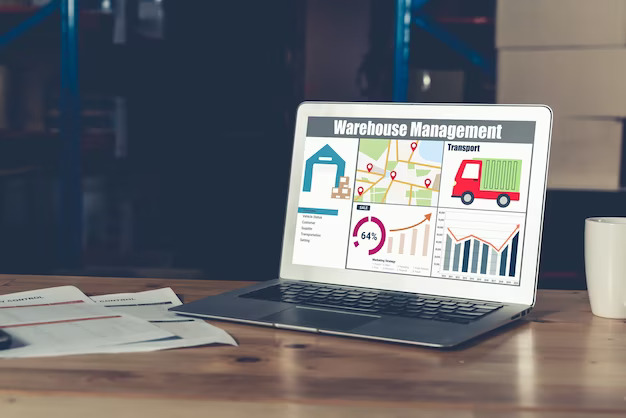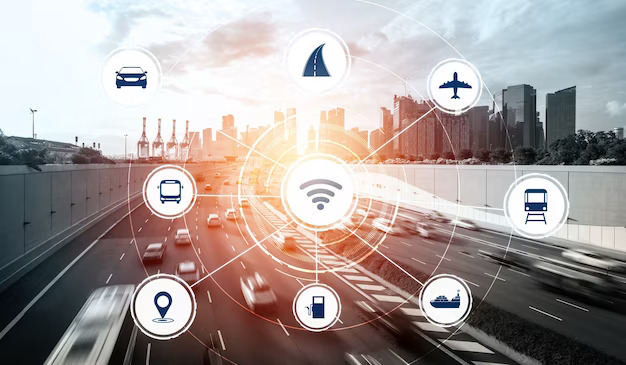
A transportation management system (TMS) is a platform for logistics that makes use of technology to assist organizations in the planning, carrying out, and optimizing of the physical movement of goods, both incoming and departing, as well as in ensuring that the shipment is compliant and that the necessary documentation is available. One of the primary supply chain processes is transportation, along with production and storage. It entails a wide range of tasks that must be effectively managed, including — carrier management, cargo tracking, and delivery planning. Spreadsheets and phone calls might be used by small enterprises with few shipments to manage these processes. Excel is clearly inadequate to manage your transportation activities whenever your turnover increases, and you need something more powerful. We offer specialized expertise can be used in this situation.
Covenant Technologies proffer transportation management system logistics software, which tracks freight across local and international channels, optimizes loads and delivery routes, and automates formerly time-consuming procedures like trade compliance paperwork and freight billing, contributes to the timely delivery of goods. Both enterprises and end users get cost reductions because to transport management systems.
Our software’s typical supply chain system also includes procurement, product lifecycle management, supply chain planning, order management, production, inventory, and warehouse management in addition to transportation management.
In supply chains, transportation management systems are crucial because they have an impact on every step of the procedure, including planning, procurement, logistics, and lifecycle management. A powerful system's wide-ranging and comprehensive visibility enables more effective transportation planning and execution, which raises customer satisfaction. More sales result from that, which helps firms expand. We operate and live in such a dynamic global trade world, so it's critical to have a system that will help
Key features of a Transportation Management Software
Companies can purchase stand-alone transportation management software that they can combine with their current cloud-based or on-premises enterprise solutions. Features in our contemporary transportation management system software can significantly reduce complexity and improve efficiency. Key elements consist of:








Fleet Management
A Transport management system will enable you to view and utilize all of your assets on a single platform if you run your own fleet. You can assign drivers and equipment; manage dispatch and driver compensation, even if not all transportation management system providers have sophisticated fleet management features. Fleet monitoring commonplace, including in-transit visibility of driving conditions, routes, and assets. Companies can lower their fuel and maintenance costs, as well as reduce delays and improve driver safety.
You may manage fuel usage and environmental impact, keep tabs on vehicle inspections and maintenance tasks, and even remotely operate the truck if you use specialized fleet management software.

Order Management

All parties involved, including planners, drivers, and customers, have access to order information in a transportation management system. These tools enable users to view and control transport requests.
Order entry
Order taking, whether manual or automatic, entails entering all pertinent information, such as the product or weight, as well as the present location and destination. A route is frequently generated, a driver and vehicle are assigned, and an ETA is calculated automatically. This order immediately goes to its scheduled transport if your WMS is integrated.

Order overview

Order planners and drivers have access to created orders together with their routes and assigned transports via a dashboard that shows their daily workload. The driver can maintain all paperwork on their Smartphone or tablet because they are all automatically linked to the orders to which they are pertaining. Planners have a complete picture of all scheduling modifications and truck locations as drivers provide updates on the status of orders while en route.
Tendering
Our Transportation management software automatically tender shipments for you. The carriers on the list are arranged so you may always reach the vendor using the criteria you've set or let the system pick a carrier for you. The majority of systems have waterfall, status, and broadcast tendering techniques. These are the following tendering techniques—when choosing a carrier, factors like service level, customer preference, etc. should be taken into consideration:
 Least-cost – where the lowest rate is
selected and the offer is extended to more carriers.
Least-cost – where the lowest rate is
selected and the offer is extended to more carriers.
 Auto-award – in which shipments are
consistently assigned to particular carriers.
Auto-award – in which shipments are
consistently assigned to particular carriers.
 Allocations – when using contractual
percentages or load numbers.
Allocations – when using contractual
percentages or load numbers.
 Service-based – when picking the
best-performing carrier.
Service-based – when picking the
best-performing carrier.
 Customer-based – when picking the carrier
that a customer prefers.
Customer-based – when picking the carrier
that a customer prefers.

Shipment Rate Management

A rate engine is one of the most crucial tools in a transportation management system. Based on rules, such as base rates, discounts, and contract agreements, a rate engine determines transportation rates for package, LTL, truckload, and intermodal shipping. The most complex tariffs should be supported by a transportation management system, which can also automatically deliver a price to the client as they submit their request.
Load Planning
You may calculate the amount of loading space that is available while taking the maximum loads and weight into account when planning the loading space for trucks, trailers, and containers. Master data, for instance, allows you to enter and retain information about your vehicle's measurements for future use. Dimensional information about the item is taken from the goods order. The 3D load plan function of some transportation management systems allows you to view and modify how the cargo is distributed and how much space is being used.

Connectivity Portals

A transportation management system often allows for email connections with partners and clients, but some suppliers also offer specialized self-service web portals. Customers can create orders there and check the status of those orders, while partners can send tender offers, examine invoices, and submit them.
Route Analysis
A transportation management system's primary purpose is planning, however routing is not one of its strong points. Many companies employ specialised software to optimise their routing processes since, unlike transportation management systems, it includes a wide variety of algorithms to determine the optimum routes. Therefore, you might need to use a combination of these tools if the routing capabilities of your transportation management system are insufficient for your needs.

Tracking, Tracing and Event Management
Using track and trace technology, you can keep a real-time log of how goods move while being transported. In other words, you can monitor the truck continuously and don't need to get in touch with the driver to find out where it is. Customers are frequently informed on the location of their shipments using this, which is also utilized for scheduling and security reasons. Through telecommunications networks like GSM, GPRS, or UMTS, a telematics device in a truck or a driver's smart phone is connected to the transportation management system. To learn more about how telematics systems operate, please see our article on the subject.
Barcodes and RFID tags can also be used to track shipments: In a distribution centre, for example, every time it is scanned, a transportation management system receives an update on its location.
The benefits of a Transportation Management System
With the aid of track and trace technology—you can keep track of shipments and optimize delivery. Businesses can profit greatly from a TMS and from contemporary transportation management in general. Among the greatest advantages are:
 Reduced costs for the business and the end
customer
Reduced costs for the business and the end
customer
 Simplification of supply chain processes
across geographies, modes, and carriers
Simplification of supply chain processes
across geographies, modes, and carriers
 Automation of business operations for
faster and more accurate billing and documentation
Automation of business operations for
faster and more accurate billing and documentation
 Improvement in visibility and security,
especially in transit
Improvement in visibility and security,
especially in transit
 Time savings—fewer manual steps result in
fewer delays and faster delivery times
Time savings—fewer manual steps result in
fewer delays and faster delivery times
 The ability to track freight, both locally
and globally, on a single platform
The ability to track freight, both locally
and globally, on a single platform
 Better import and export compliance
minimizing penalties and shipment delays
Better import and export compliance
minimizing penalties and shipment delays
 New business insights as better reporting
leads to faster action and process improvement
New business insights as better reporting
leads to faster action and process improvement

 Improvements in customer service and customer satisfaction with real-time updates and
fewer shipment delays
Improvements in customer service and customer satisfaction with real-time updates and
fewer shipment delays
 The ability to scale the business by meeting and exceeding customer demands for fast,
on-time shipments
The ability to scale the business by meeting and exceeding customer demands for fast,
on-time shipments
The Outlook of Transportation Management System

Many of the same commercial advantages that other cloud solutions offer, such as increased economies of scale, a cheaper total cost of ownership, the absence of upgrade fees, and a quicker return on investment (ROI), are also provided by cloud-based transportation management systems.
A cloud-based transportation management system offers IT additional advantages such as quicker deployments, fewer training and installation hours, automatic feature updates, and enhanced security.
Customers now anticipate two-day and even same-day delivery in addition to on-time deliveries, with real-time updates given at every stage of the shipping process. Supply chains must adapt to stay up with the rapidly shifting global trade restrictions, frequently by making investments in transportation management systems.
Many of the same commercial advantages that other cloud solutions offer are also provided by a cloud- based transportation management system, including Systems for transport management must be more capable and feature-rich in order to give customer’s faster service and businesses more in-depth data. By making better recommendations and more accurate forecasts, machine learning makes transportation management systems more intelligent.
To further increase visibility and provide better customer service, businesses might choose to integrate developing technology into their global trade management and transportation systems.